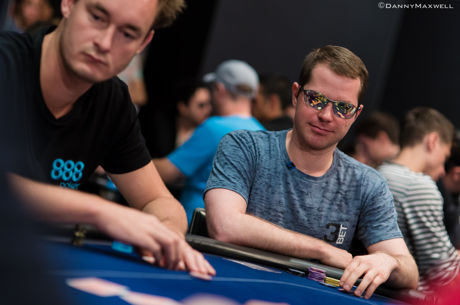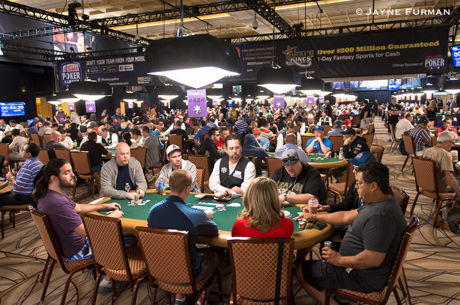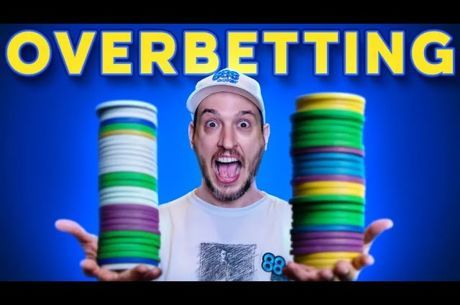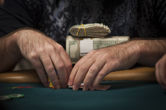Maximizing Expectation When Betting as a Bluff
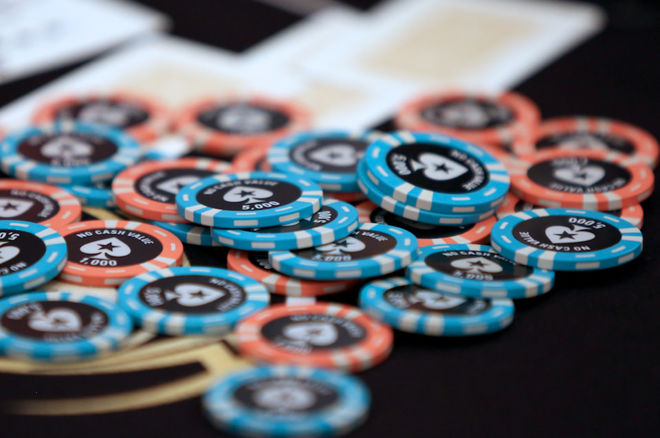
I have made the claim that there are only two fundamental reasons to bet:
- We can bet for value (the subject of my last column)
- We can bet as a bluff (the subject of this column)
Both reasons boil down to the simple requirement that we should always make our highest expected value (EV) play.
The Second Fundamental Reason to Bet: As a Bluff
We don't always need the best hand in order to win the pot. We can sometimes win with an inferior hand if our opponent will fold too often to a bet.
The sloppy meme for bluffing is "we need better hands to fold." But it's not nearly that simple, and often simply wrong. This catchphrase is sloppy because it isn't always necessary to force better hands fold. We may find that worse hands will also fold, some with significant equity against our hand. This is especially important on earlier streets when there are more cards to come.
Fold Equity
Our primary goal when bluffing is to end the hand now — we prefer the villains to fold. The key concept here is fold equity (FE). Let's consider a simple example.
Suppose we raise on the button with A♦K♥ and get called by a villain with a 20 percent Flopzilla calling range. (We remove QQ+ and AK from this 20 percent range, hands with which we believe the villain would raise.)
The flop comes Q♥7♣3♣. We have missed the flop and consider a continuation bet semi-bluff. (It's a semi-bluff since we have six outs to a potentially winning hand.)
Suppose he will call our c-bet with any pair-or-better hand and any flush draw. This is 115 combos out of the 187 combos we think are in his current range. We can estimate our fold equity here as:

Our fold equity may be even higher if he folds some of his lowest pairs, such as 2x2x, 4x4x, 5x5x and 6x6x. We might also remove some of his superior combos if he sometimes donk bets with a modest made hand such as QxJx-offsuit.
Suppose we bet $10 into the $20 pot. Our bluff will be immediately profitable if the villain folds at least 10 / (10+20) = 33.3 percent of the time. Since we expect him to fold more often than that, our c-bet bluff will be +EV.
Note that we don't need many better hands to fold, contrary to the "bluffing meme." In fact, a bluff can be profitable even when every superior combo calls our bluff.
Equity-When-Called
But a full analysis is more complicated than merely estimating our fold equity. Suppose we decide to make a pot-sized bet in the last example. Now we need the villain to fold at least 20 / (20+20) = 50 percent of the time for immediate profitability. A typical villain will be somewhat more likely to fold his weakest hands to this larger bet. If he folds his twos, fours and fives, our FE = 90/187 = 48.1 percent and our bluff may not be immediately profitable.
Yet our bluff can still be +EV since we have equity against the villain's calling range. In fact, our equity against his c-bet calling range is about 47 percent, according to Flopzilla. So our bluff immediately wins the $20 pot about half of the time. When our bluff is called, we win the new pot about half of the time. (We'll simplify the argument by assuming the pot gets checked down after the flop.)
Using FE (Fold Equity), SDE (Showdown Equity) and V (Villain), we can write the EV equation as:
EV = ($ won when V folds) + ($ won when V calls and we win) – ($ lost when V calls and we lose)
= FE × (Pot) + (1-FE) × [(SDE × (Bet + Pot)) – (1-SDE) × (Bet)]
= 0.5 ($20) + 0.5 [0.47($40) - 0.53($20)] = $18.20
So our semi-bluff c-bet is profitable, even though it is not immediately so.
Suppose instead we raise preflop with K♦Q♦ and the flop comes A♥7♦3♣. This is very similar to our original example, except that we have much less equity-when-called. Now we must rely almost entirely on our fold equity to achieve a +EV c-bet bluff. Even if bluffing is slightly +EV, checking behind might be ++EV.
A River Example
Suppose we are heads-up on the river and the villain checks into the $100 pot. The effective stacks are $100 and we have a missed straight draw with our 7x6x-offsuit. There's also a busted flush draw on the board. Should we bluff?
Since there are no more cards to come, only our fold equity matters. If we bet half-pot, the villain must fold at least ($50) / ($100 + $50) = 33.3 percent or one-third of the time. Depending on the previous action, we might believe that the villain would have bet the river with his strongest combos, so we decide to discount them. He might also have a busted draw which would likely beat us at showdown. Since we can rarely win if we check, we should bluff if we think the villain will fold at least one-third of the time.
This is one place where the bluffing meme is correct. We want the villain to fold better hands since he has few worse hands left in his range.
Bet Sizing
Our half-pot bet is offering the villain 3-to-1 odds on his call, meaning he only needs to win 25 percent of the time. This can be very enticing to a Vegas small-stakes player, even when he expects to lose. We can manipulate the odds we lay him, as well as our fold equity, by adjusting the size of our bluff.
Suppose in the last example we shove — a pot-sized bet ($100). Now the villain needs to fold at least half of the time for our bluff to be profitable. If the villain's hand is elastic, he will make his decision based on the size of our bet; a large bet might get him to fold nearly everything other than two-pair combos and better. If we believe he is unlikely to have such a hand, a shove might be the best play.
But if the villain has an inelastic hand, one that will never fold to the shove, our bigger bet just loses more money. No villain will fold the nuts, and few will fold a big hand like a set, especially in a small stakes Vegas game.
The elasticity of a villain's hand is not simply a function of the strength of the hand, however. It also depends on his poker personality. Some players (calling stations) simply will not fold top pair. They will convince themselves that we are bluffing, and will make a crying call. Perhaps they should fold more than half of the time, but many players won't.
Multiple Villains
Estimating our fold equity when we face multiple opponents is more complex. Our first example had us with A♦K♥ on the button on a Q♥7♣3♣ flop, facing a single villain. We needed him to fold at least a third of the time to a half-pot bet, and to fold half of the time to a pot-sized bet.
Suppose we face two identical villains, each with an expected 50 percent folding likelihood. They will then both fold (1/2) × (1/2) = 25 percent or 1/4 of the time. We don't have sufficient overall fold equity for a continuation bet bluff to be immediately profitable.
Nevertheless, a c-bet semi-bluff can still be profitable if we have significant equity-when-called. When we have a strong image as well as superior position, c-bet semi-bluffing into two villains is still often profitable.
But when we face three or more opponents, c-bet bluffing is usually unprofitable. So the rule of thumb becomes "auto c-bet bluff into one villain and never c-bet bluff into three villains." A two-villain c-bet bluff is a judgment call.
Also in this series...
- Low-Stakes Live Games Differ from Online
- Do You Play Too Many Hands?
- Are You a Position-Dummy?
- When Can I Take a Bathroom Break?
- Is Straddling a Good or Bad Play?
- A Preflop Question: Is Limping Lame?
- Maximizing Expectation When Betting For Value
- Five Weak Reasons to Bet (and One Weak Reason Not To)
- Do You Have 'Jack-O-Phobia'? Playing Pocket Jacks in Live NL Hold'em
Steve Selbrede has been playing poker for 20 years and writing about it since 2012. He is the author of five books, The Statistics of Poker, Beat the Donks, Donkey Poker Volume 1: Preflop, Donkey Poker Volume 2: Postflop, and Donkey Poker Volume 3: Hand Reading.
In this Series
- 1 Donkey Poker: Low-Stakes Live Games Differ from Online
- 2 Donkey Poker: Do You Play Too Many Hands?
- 3 Donkey Poker: Are You a Position-Dummy?
- 4 Donkey Poker: When Can I Take a Bathroom Break?
- 5 Is Straddling a Good or Bad Play?
- 6 A Preflop Question: Is Limping Lame?
- 7 Maximizing Expectation When Betting For Value
- 8 Maximizing Expectation When Betting as a Bluff
- 9 Five Weak Reasons to Bet (and One Weak Reason Not To)
- 10 Do You Have 'Jack-O-Phobia'? Playing Pocket Jacks in Live NL Hold'em
- 11 Donk Betting in Small-Stakes Live No-Limit Hold'em


